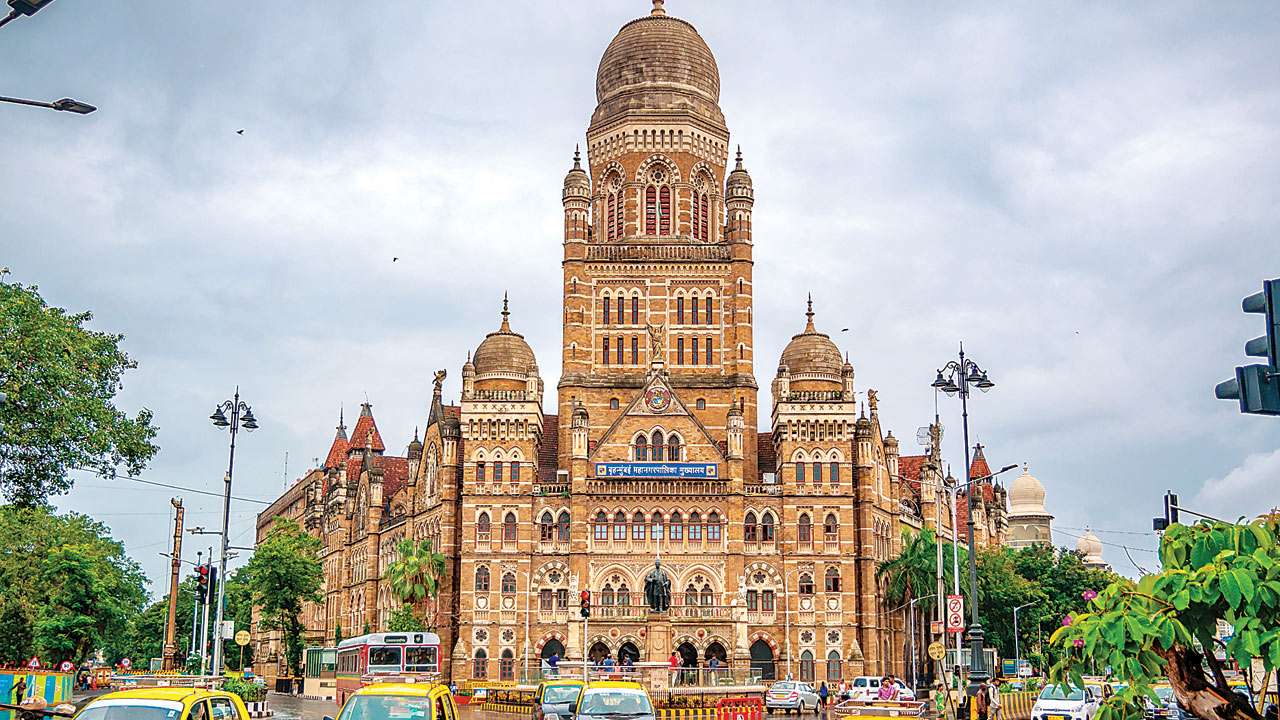BMC Elections
- Past BMC Election Results
- Know your Booth Location
- Standing Committee Members
- BMC Elections 2017 Delimitation
- New Ward List Civic Elections 2023
- New Wards Maps for BMC Elections 2023
- BMC Election 2023 Date
- CEO Maharashtra
- Know Your BMC
- BMC News & Updates
- Wards
- Candidates
- Mumbai Corporators
- Advertise
- About Us
- Contact
- Volunteer
- Privacy Policy
BrihanMumbai Municipal Corporation
BrihanMumbai Municipal Corporation (BMC)

The civic body governing the large population of Mumbai city is BrihanMumbai Municipal Corporation (BMC). It is also known as Municipal Corporation of Greater Mumbai (MCGM) responsible for providing all civic amenities and had annual budget of Rs 39039 Crore for 2021-22. The richest corporation in India.
The Mumbai Metropolis has a glorious historic tradition of strong civic activism dedicated to thecause of a better life for all its citizens.Honorable Mayor of Mumbai is at the centre stage of allcivic activities in Mumbai.Honorable Mayor of Mumbai has a distinction of being head of the largestlocal government in Asian government.
History of Municipal Corporation of Bombay.
The BMC was formed in 1865 which was headed by Commissioner Arthur Crawford (Crawford market named after him). The headquarters which is located near CST railway station was built in the year 1893. The architecture of the building is of the Indo-Sarcenic styles, Gorgoyle sculpture with the Neo-Gothic style.
- 1805 – Municipal administration was formed but in unorganized way.
- 1845 – A board of Conservancy of 7 members was formed to manage the municipal funds.
- 1858 – Three Municipal Commissioners were appointed to improve sanitary conditions. But they were inefficient.
- 1865 – Governor Sir Battle Frere appointed new Municipal commissioner Sir Aurther Crawford. He brought positive changes in Mumbai.
- 1873 – The first municipal elections were held and total 64 members were in administration. All 64 were rate payers of Bombay.
- 1887 - The new Municipal bill was introduced in the Legislative Council.
- 1888 – Act of 1888 led to better administration by providing proper responsibilities to its representatives.
- 1922 – rate payers were replaced by rent payers and the strength of Corporators were increased to 106 members.
- 1928 – four more seats were added to trade Unions and in 1950 increased to 135.
- 1952 – it became fully elected body. The strength of Corporation increased from 140 in 1966 to 170 members in 1985.
-
Pherozshah Mehta played a key role in drafting the Act of 1888. Under this act three main authorities were formed:
- The Corporation members
- The Standing Committee
- The Municipal Commissioner
Administrative Structure:
The city is divided is into six zones and further divided into 24 wards for administrative convenience.
- Each ward is headed by an Assistant Commissioner.
- Further, the Corporation appoints Heads of Departments of the numerous departments that work with a specific mandate such as Water, Health, Sanitation.
- The Corporation is represented by Corporators elected from that ward. They in turn elect the Mayor of Mumbai who is the first citizen of the city.
- The Corporators form the legislative arm of the corporation
Officials of BMC
Municipal Commissioner –
The head of the corporation is Comissioner and is a member of the Indian Administrative Service.
Additional Commissioners
Under Municipal Commissioner, there are four additional commissioners
Deputy Commissioners –
Under Additional Commissioners there are Deputy Commissioners who are head of departments such as Solid Waste Management (SWM), Sanitation, Water, Health etc.
Corporators:
In BMC Elections the corporators of political parties are elected for 24 wards which constitutes 237 sub wards. Corporators form the legislative arm of the corporation.
Copyright © 2025 All Rights Reserved | BMC Election